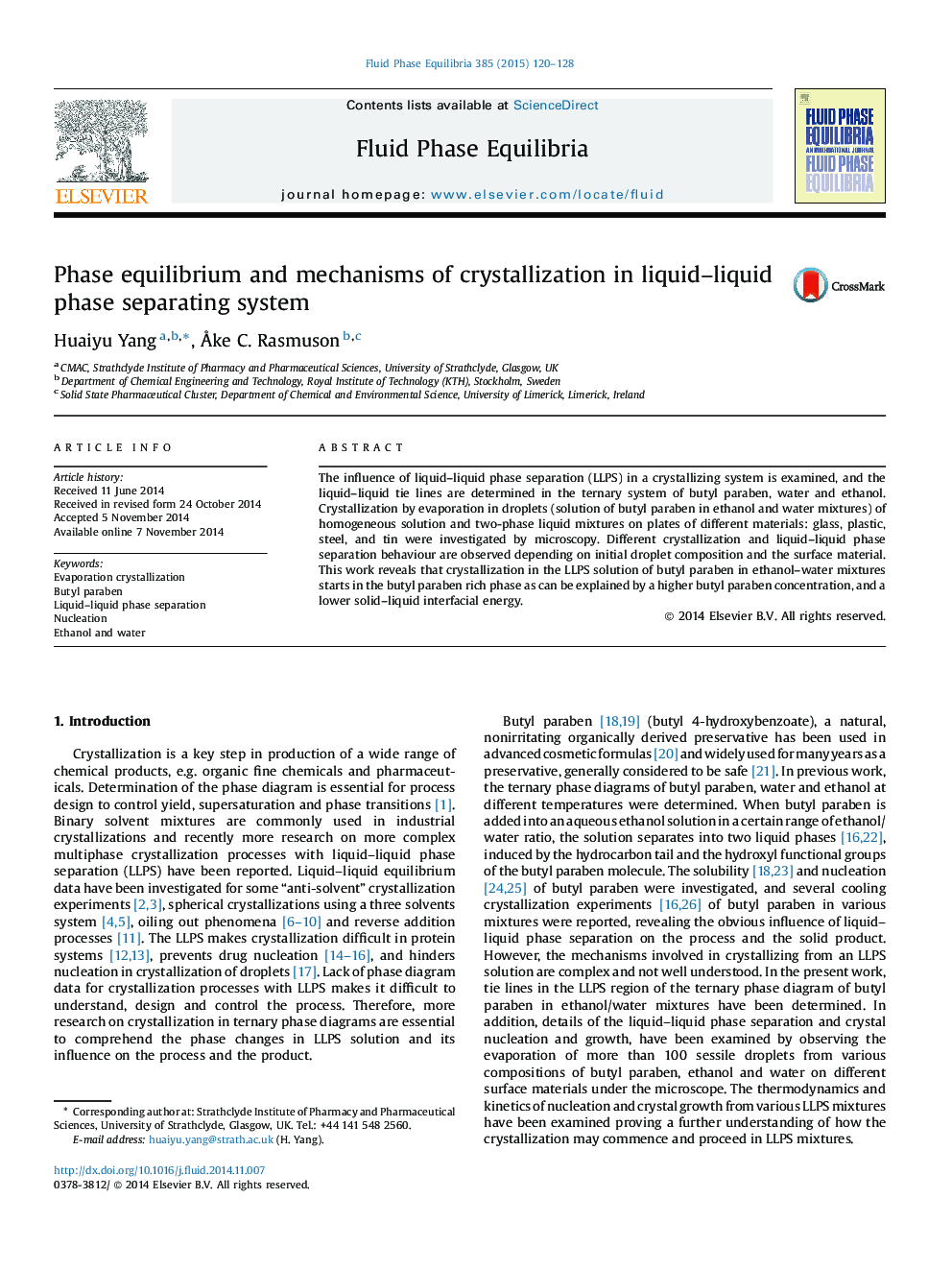| Article ID | Journal | Published Year | Pages | File Type |
|---|---|---|---|---|
| 201779 | Fluid Phase Equilibria | 2015 | 9 Pages |
The influence of liquid–liquid phase separation (LLPS) in a crystallizing system is examined, and the liquid–liquid tie lines are determined in the ternary system of butyl paraben, water and ethanol. Crystallization by evaporation in droplets (solution of butyl paraben in ethanol and water mixtures) of homogeneous solution and two-phase liquid mixtures on plates of different materials: glass, plastic, steel, and tin were investigated by microscopy. Different crystallization and liquid–liquid phase separation behaviour are observed depending on initial droplet composition and the surface material. This work reveals that crystallization in the LLPS solution of butyl paraben in ethanol–water mixtures starts in the butyl paraben rich phase as can be explained by a higher butyl paraben concentration, and a lower solid–liquid interfacial energy.
Graphical abstract•Concentration of ethanol: in top layer ∼ bottom layer solution ∼ in the whole LLPS solution.•Interactions of the respective liquid phases with the solid surface → special movements of turbid solution for solutions with different initial compositions.•Butyl paraben lean/water rich solution: lighter density, higher affinity with glass surface, higher solute–solvent interfacial energy.•Nucleation happens in butyl paraben rich phase/continuous phase.•Butyl paraben lean/water rich phase solution prevents the nucleation and crystallization in LLPS solution.Figure optionsDownload full-size imageDownload as PowerPoint slide
